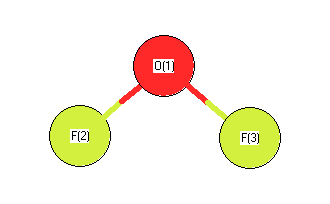.
| squib |
reference |
DOI |
| 1972Kir:333 |
Kirchhoff, W. "On the Calculation and Interpretation of Centrifugal Distortion Constants: A Statistical Basis for Model Testing: The Calculation of the Force Field." Journal of Molecular Structure. 41, 333-380 (1972) |
10.1016/0022-2852(72)90210-x |
| 1974Hel/Hel(II/6) |
Hellwege, KH and AM Hellwege (eds.). Landolt-Bornstein: Group II: Volume 6 Molecular Constants from Microwave, Molecular Beam, and Electron Spin Resonance Spectroscopy Springer-Verlag. Berlin. 1974. |
10.1007/b19951 |
| 1977Gol/Jea:901 |
WG Golden, AC Jeannotte II, CC Blackburn, J Overend "Intensities of binary overtone and combination bands in the i.r. spectrum of NF3" Spectrochimica Acta 33A, 901, 1977 |
10.1016/0584-8539(77)80089-5 |
| 1979Har/Lau:619 |
Harmony, Laurie, Kuczkowski, et.al., Molecular structures of gas-phase polyatomic molecules determined by spectroscopic methods, J. of Phys. And Chem. Ref. Data, Vol. 8, #3, pgs. 619-722 |
10.1063/1.555605 |
| Gurvich |
Gurvich, L.V.; Veyts, I. V.; Alcock, C. B., Thermodynamic Properties of Individual Substances, Fouth Edition, Hemisphere Pub. Co., New York, 1989 |
|
| NSRDS-NBS10 |
R. D. Nelson Jr., D. R. Lide, A. A. Maryott "Selected Values of electric dipole moments for molecules in the gas phase" NSRDS-NBS10, 1967 |
10.6028/NBS.NSRDS.10 |
| Shim |
Shimanouchi, T. , Tables of Molecular Vibrational Frequencies, Consolidated Volu |
10.6028/NBS.NSRDS.39 |
| webbook |
NIST Chemistry Webbook (http://webbook.nist.gov/chemistry) |
10.18434/T4D303 |











